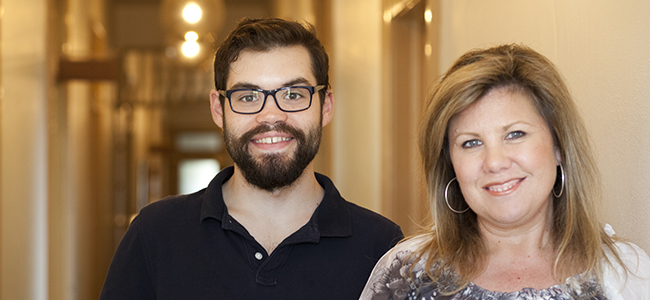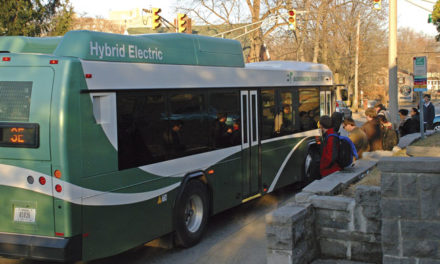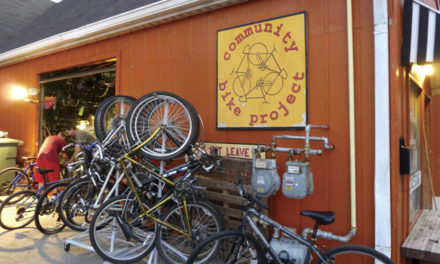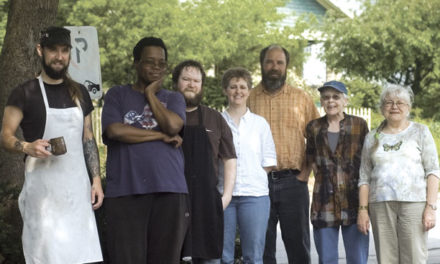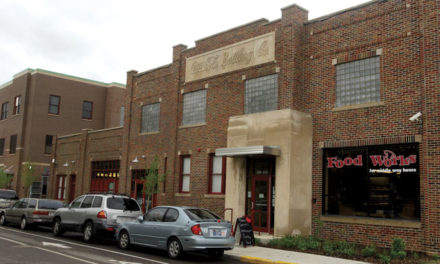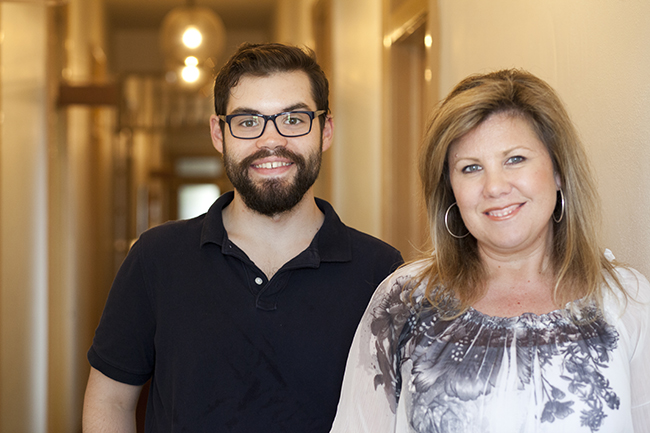
Nick Philbeck, Community Justice & Mediation Center (CJAM) senior mediator and restorative justice case manager, and Susan Burton, executive director of CJAM. Photo by Shannon Zahnle
BY BARB BERGGOETZ
A youth slashes the tires of a man’s car. Two neighbors argue about a dog’s loud barking. Groups of kids clash at school. Board members at a nonprofit organization are at odds with their president.
“There is conflict all over,” says Susan Burton, executive director of the Community Justice & Mediation Center (CJAM). “What we do here is restore relationships.”
For 20 years, this nonprofit organization has worked to bring together individuals or groups that can’t find a way to exist peacefully with one another. Burton calls CJAM one of the best kept secrets in Bloomington — not that it wants to keep its work under wraps.
CJAM supporters are trying to spread the word that its services and trained mediators are on hand in Monroe and surrounding counties to help heal the harm from crime and all types of conflict through a variety of programs.
In 2014, the number of clients increased by 19 percent to more than 300, while the number of volunteers (who do mediation and perform other tasks) more than doubled to 22. The agency’s space at 205 S. Walnut grew to include a second mediation room, and in April 2015, CJAM signed a contract with Monroe County Community School Corporation to work with students in conflict.
“Basically, we would just like to have a community that knows how to handle conflict in positive, productive ways,” says Nancy Lumbley, a volunteer senior mediator since 2000. “We do not resolve conflict for them, but help them facilitate a way to resolve their disputes.” Examples abound.
Burton tells of the youth who slashed a man’s tires. The boy blamed the man for being a “sucker.” With mediators’ help, the two talked and decided the boy would work for the man as restitution. After shoplifters hear of the harm they cause, some vow never to steal again. In one case, a youth stole from a woman. After mediation, she mentored him, hired him, and helped him pay for college.
Eighty percent of mediations result in agreements. Often, says board president and senior mediator John Alme, the parties not only settle immediate disputes but find ways to avoid further problems.
“The process is designed to get at what the issues really are,” he says. “Once they get to underlying issues — the fact they don’t trust each other or feel slighted — it’s easier to resolve the issues that brought them into remediation.”
Two mediators who have undergone 48 hours of training and who remain neutral conduct each session. Clients pay fees, from $50 to $100, though CJAM doesn’t want to turn away anyone, says Burton.
“We want to empower people to feel like they are solving their own problems and that they have a voice in the process,” says Burton.
CJAM’s Victim & Offender Restoration and Shoplifting and Theft Education programs receive clients primarily from the criminal justice system. The Monroe County Small Claims Court also supplies clients who agree to mediation.
CJAM has been able to provide valuable community services mainly because of its passionate supporters, says Roberta Wysong, a board member and volunteer since CJAM incorporated in 1995.
“Our mission is not one that grabs some people in the way homelessness does or the physical needs of youth or animals. It’s a more complex story to tell,” she says, “but I see the benefits. Our model gets people face to face to work out their problems personally.”
CJAM’s annual fundraiser, Harvest Gathering, will be at 5:30 p.m. October 24 at The Fields. The guest speaker is Holocaust survivor and forgiveness advocate Eva Kor.


